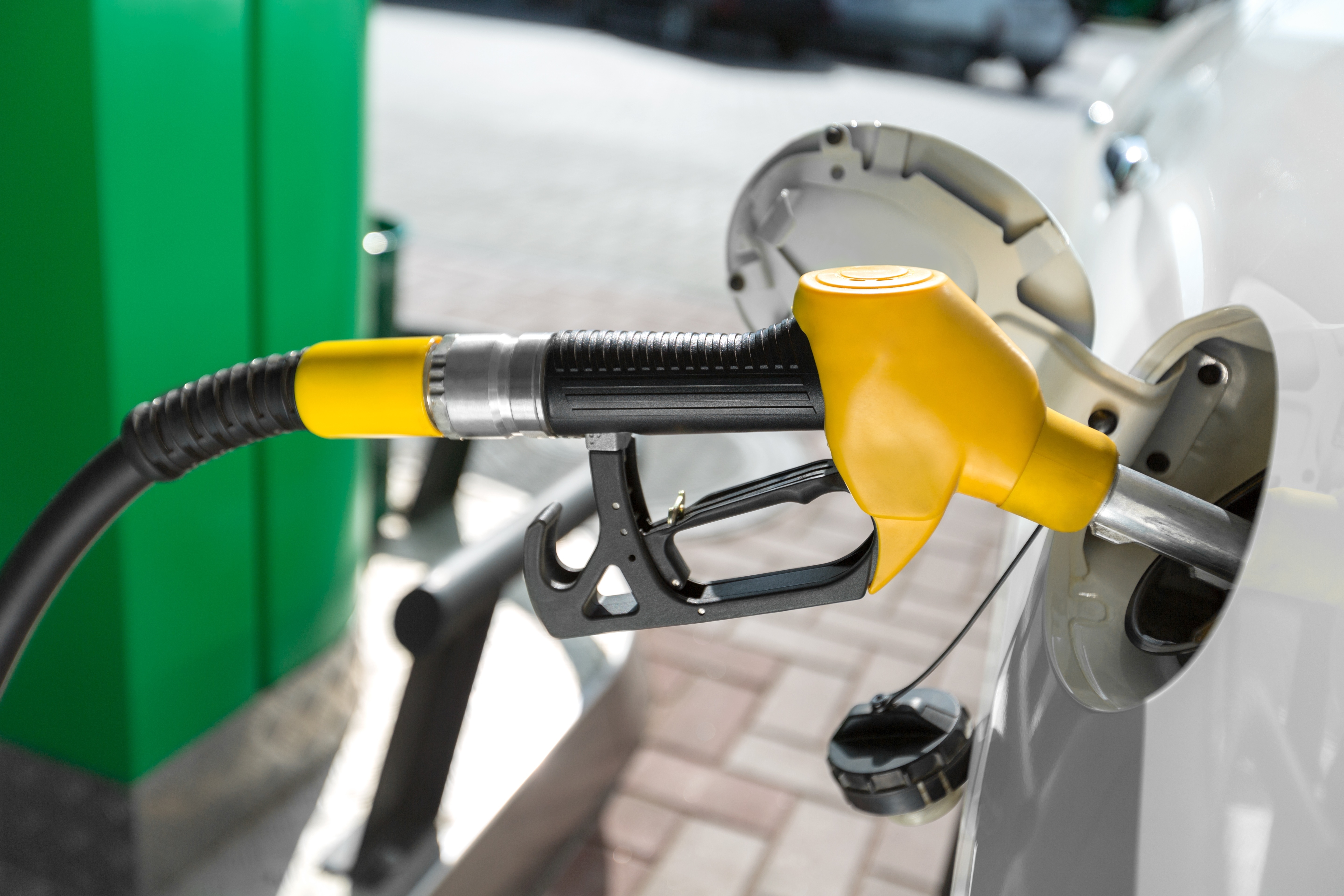What CAFE Fuel Economy Standards Could Mean For You in 2016
The federal government issued regulations that make your dream muscle car nothing more than a dream than in 2016, unless the technology behind ...

Back in January 2022, the view for most people was that after having gone through 2019, 2020, and 2021, the year 2022 had to be better. In some ways it was, but in other ways, it brought a whole new set of problems. The problem of the COVID pandemic transitioned from being the dominant thought on people’s minds to something more like the annual flu season - something we deal with every year with new variants that require new vaccines (like the flu itself).
Yet, we replaced COVID with a different set of problems. Perhaps as the consequence of shutting down the world economy for a significant amount of time, we saw record-high inflation coupled with supply shortages of basic items that none of us under the age of, say, 90, had ever seen before.
As we transition into a new year, we all wonder if 2023 will be better than 2022. We hope it will be. Let’s take a crack in predicting some things for 2023. It may not all be great.
Gas prices began to rise in 2022 soon as the Russian invasion of Ukraine in February. A big reason for this was the de-facto removal of Russian oil from the worldwide market after the United States and Europe placed sanctions on Russia for the invasion. U.S. consumers weathered a summer and fall of high gas prices but got some relief late in the year as the prices went down. Now, as we see 2023 coming upon us, gas prices are below what they were before the invasion.
What does any of this mean for what to expect in 2023?
Overall, analysts are expecting the average price of gas for the entire year 2023 to be around $3.50. That’s about fifty cents lower than they were in 2022. If that figure looks high (say, for example, if you live in Alabama and are used to paying in the $2s for gas), remember that that figure is for the entire country and includes both the expensive and less-expensive parts of the year.
Overall, it’s predicted that the typical family is going to save around $270 in gas costs over what they paid this past year. This doesn’t mean we won’t see the yearly fluctuations in prices, though. We will probably see gas prices rise around May in preparation for the summer driving season. Analysts predict average national prices will rise above $4.00 a gallon at that time. But they’ll go down later like they always do.
Another thing that influenced gas prices this past year was the release of oil from the Strategic Oil Reserve. The SPR was created way back in 1973 in response to the OPEC oil crisis. Over the proceeding 40 years, sometimes the government has alternated between stockpiling millions of barrels of oil in the Reserve and releasing portions of it into the marketplace. Releasing oil in this way has the effect of making prices go down (because you’re increasing supply availability). The total amount of oil in the SPR has fluctuated between 600 million and 700 million barrels since the country recovered from Hurricane Katrina’s devastating effects on the oil refineries back in 2005.
Starting way back in November 2021, the Biden Administration started releasing portions of the SPR into the marketplace to try and keep prices stable. That’s one of the traditional uses of the SPR during its lifetime. But when Russia invaded Ukraine in February 2022, shockwaves were felt across the world oil markets, and those shockwaves reached consumers in the form of skyrocketing gas prices. So it was in late March that the Administration made the decision to release 20% of the SPR - 180 million barrels - into the marketplace to try to tamp the price increases down.
It appeared to have had the desired effect. From March to July, gas prices rose almost 70 cents a gallon. But analysis has shown that if the Biden Administration hadn’t released that extra oil, US drivers probably would have been paying 30 cents more per gallon on top of that.
In this way, the Strategic Petroleum Reserve functioned as it was supposed to. Now, the Biden Administration will spend time building the reserve back up. The SPR is at its lowest level since 1983 - about 375 million barrels. However, because oil prices are so much lower than they were 6-10 months ago, the government is going to save money by refilling the stockpile. In effect, the Biden Administration’s decisions may actually help the government make money. Or, at least, save money by reducing costs. Remember, they sold the oil when prices were high, and they’re (essentially) buying it back when prices are low.
What would you say the biggest stories in “tech” were in 2022? Is Elon Musk buying Twitter? Perhaps - certainly a bigger story for those immersed in that world than those who aren’t. Depending on who you ask, the biggest tech innovations and breakthroughs of 2022 were some combination of
The development of Paxlovid treatment for COVID (which reduced the risk of hospitalization by almost 90%)
The first documented successful nuclear fusion breakthrough (where more energy was created than used)
The opening of the world’s biggest carbon removal plant in Iceland, capable of capturing 4000 metric tonnes of CO2 from the atmosphere every year
The world’s 2nd biggest cryptocurrency (Ethereum) successfully switched to a “proof of stake” model for validating transactions. This was big news because “proof of stake” uses 99.9% less energy than the “proof of work” validating model used by Bitcoin. Financial and tech analysts insist that this energy use was always going to be the biggest hurdle limiting how well cryptocurrencies can live up to their potential.
What should we expect in 2023 when it comes to cars and trucks? Here are some thoughts.
More Improvement in Electric Vehicles - When the 2023 smoke clears a year from now, we think this one is going to turn out to be the biggest story of the year in the car and truck industry. This one’s a no-brainer, as EVs are here to stay. Yet, they aren’t a huge part of the market quite yet. 2023 is likely to be a year where the market for Electric Vehicles matures and stabilizes. How much this happens is really going to depend on how far the needed advancements in EV reliability are taken. By reliability, we mean cost and range. How much is it going to cost me (the owner) to go how far? The biggest issue that potential first-time EV buyers have is how the range of the electric range vehicles with the competing gas or diesel vehicle. Virtually all of the higher-end electric vehicles will now go more than 300 miles on a charge. The big milestone that may come in 2023 is newer battery systems that break the 500-mile barrier. These batteries will be lithium-metal batteries that give you 500-600 miles per charge and can be charged up to 80% capacity in less than 15 minutes.
Supply Chain Challenges Will Continue For Everyone - More specifically, we’re looking at the supply chain issues for computer chips. This chip shortage will continue in 2023 and will affect both conventional internal combustion engines and electric vehicles - though, EVs will be more affected, as they use 30% more chips than conventional vehicles do. The United States did pass legislation this past year that provides more incentives for producing batteries and chips here in the United States. We will see how much that helps.
The Continued Rise of Alternative Fuel Sources - By this, we don’t mean ethanol or biodiesel. Those were never going to be long-term answers to the energy and green problems that we need to overcome for the long-term health of the planet. No, 2023 could be the year that we see meaningful development of hydrogen fuel cell vehicles. Hydrogen fueling technology has some really nice advantages even over “battery electric vehicles”. They have a high energy density and they can be refueled very quickly. Both of those factors are important for the long-haul trucking industry, where battery electric vehicle technology has some big problems - towing or transporting loads as little as 9,000 lbs reduce EV range by 45%. That's not a tenable situation for plans to replace dirty heavy-duty diesel trucks with clean electric models. So 2023 may see announcements by major truck manufacturers like Toyota, Hinoto, Isuzu, and Cummins on fuel cell models for the transportation of cargo that may end up revolutionizing the industry. Once they do that, the biggest hurdle remaining will be improving the hydrogen fuel cell refueling infrastructure.
More Availability of Customizable Options - The computer systems in cars are getting more complicated. Godman Sachs estimates that by 2025 (just 2 years from now), cars and trucks may have up to 650 million lines of code used by their onboard computer systems. Just over a decade ago, that would have been just 200 million. But consider also this, to put it in perspective. A fighter jet only has 40 million lines of code for its computer system. You see how complex automobile computing systems are becoming. One of the things that are (or will be) driving this expansion of complexity will be the coming vehicle connectivity in software. What we may see in 2023 are over-the-air software updates for cars that actually provide options to add extra software-driven features to the vehicle. Purchasers of new vehicles will be able to customize their vehicles over the course of their lifetime, adding new features with the touch of a button.
We hope you were able to get through 2022 without too much trouble. Here’s hoping that 2023 is better for all of us.

The federal government issued regulations that make your dream muscle car nothing more than a dream than in 2016, unless the technology behind ...

The United States isn't the only country wrestling with controversy over government subsidies and tax breaks over biofuels like ethanol. Now, the...
Today, we’re going back to the basics in talking about the fuels we use, the gasoline and diesel that we buy at the gas station. Even the most...